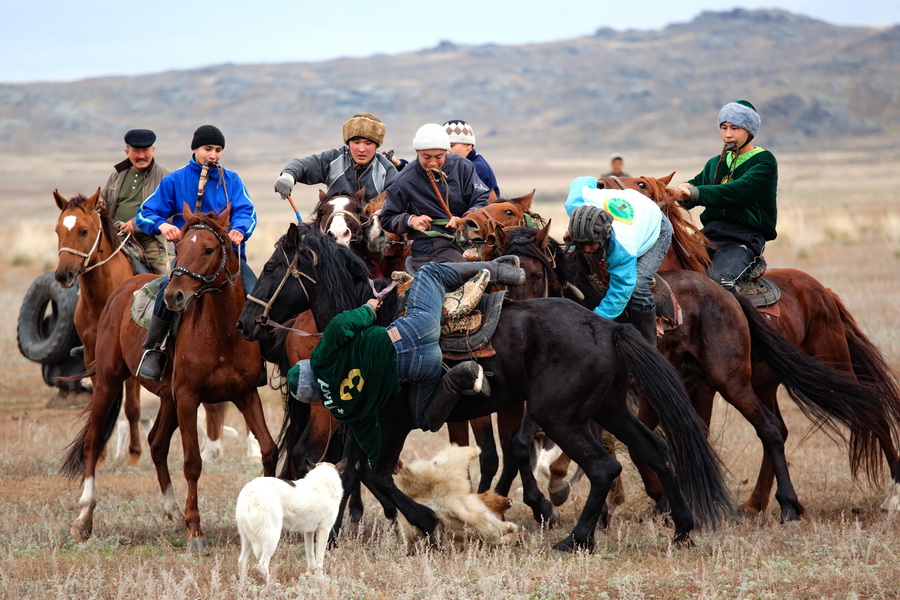
Kokpar is one of the oldest nomadic games in Kazakhstan. It has been played for many hundreds of years. This is a kind of a whole culture that has brought up more than one generation of skilled riders and warriors.
Kokpar is goat–picking. The essence of the game is that riders on horseback are fighting for the headless carcass of a goat, taking it from rivals and scoring a "goal" in a special gate. In fact, it is a symbiosis of rugby and horse riding.
In ancient times, a group of riders chased a wolf. The fastest rider killed the beast with a club and threw it across the saddle. The other riders, as if jokingly, tried to take the wolf away.
Up to a thousand players could take part in the kokpar at the same time. This tradition still exists in Kazakh auls (villages) today. In this case, each participant plays for himself.
The modern kokpar is a real game by the rules. A special field measuring 220 by 75 meters is organized for this sport. Gates are marked either with flags or make a depression in the ground – kazandyk. But recently, kazandyk is increasingly being abandoned, because a lot of injuries happen because of them. Players are divided into two teams of 10-12 people, while only four people from each team play at the same time. During the game, participants constantly come out to replace each other, because the kokpar requires a lot of physical endurance.
It is quite difficult to play with a goat carcass, because on average it weighs about 40 kilograms, and you can only grab it with one hand. Several times they tried to replace the carcass with a dummy, but it was inconvenient to hold it, as well as to take it at high speed.
Kokpar is a cruel game, but very entertaining. Modern rules of the game arose only in the twentieth century. In some ways they resemble hockey, because in the kokpar there are also several periods (from two to three) of 20 minutes each, and there are also shootouts (free throws) and removal from the field. Physical injury of rivals is prohibited here. Also important in the game is not only the training of the rider, but also the athletic form of the horse. They say that special horses are bred for the kokpar, crossing different breeds.
In Soviet times, it was forbidden to play in the kokpar because of cruelty, but amateurs did it anyway. As in ancient times, they played according to the principle – aul on aul (village on village). The one who, fighting off rivals, brought the captured goat to his village, the carcass could no longer be taken away.
After the game, the goat is cleaned of its fur and entrails and food is prepared from it for all participants of the competition. They say that such meat is considered curative and helps to cure infertility. Moreover, we are talking about the goat, which served as a "ball" in the kokpar.
There is a kokpar federation in Kazakhstan, and competitions are held annually in many cities and villages of the country. In every locality there are fans of this equestrian sport. Kazakh teams also take part not only in the Asian and World Kokpar championships, but also in the World Nomad Games, which are held in Kyrgyzstan.
Kazakh cultural figures dedicated their works to kokpar. For example, writers Dukenbai Doszhanov and Moldakhmet Kanazov, singer Orynbai Nazarbek. In 2007, the board game "Kokpar. Brave riders."
In 2014, a commemorative silver coin "Kokpar" worth 500 tenge was issued in Kazakhstan. At the same time, a commemorative nickel silver coin with a face value of 50 tenge was issued. Due to the limited edition, these coins have become real gifts for collectors and fans of kokpar.

